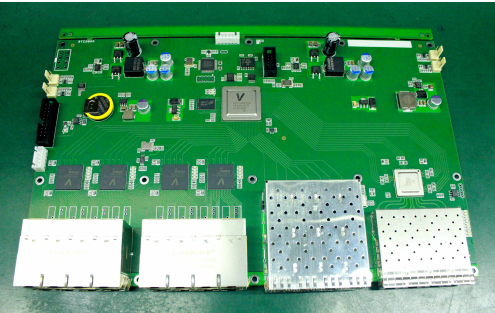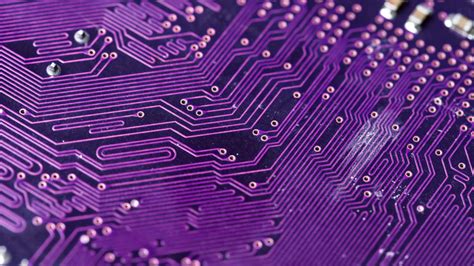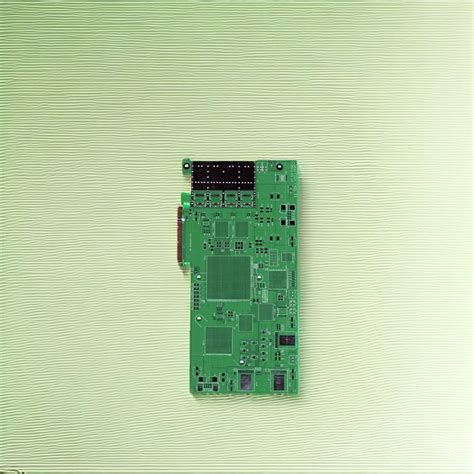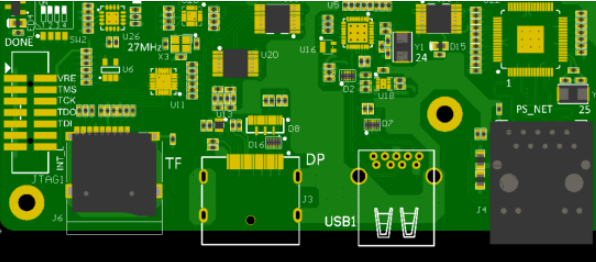8 layer pcb thickness
Understanding The Basics Of 8 Layer PCB Thickness
In the realm of electronics, printed circuit boards (PCBs) serve as the foundational building blocks for most electronic devices. Among the various configurations available, the 8-layer PCB is a popular choice for complex applications requiring enhanced functionality and performance. Understanding the basics of 8-layer PCB thickness is crucial for engineers and designers who aim to optimize their designs for efficiency and reliability.
To begin with, the thickness of an 8-layer PCB is determined by several factors, including the number of layers, the materials used, and the specific requirements of the application.
Typically, an 8-layer PCB ranges from 1.0 mm to 2.4 mm in thickness. This range is not arbitrary; rather, it is carefully selected to balance the mechanical strength, thermal performance, and electrical characteristics necessary for the intended use.
The core of an 8-layer PCB consists of alternating layers of conductive copper and insulating substrate materials.
The copper layers are responsible for conducting electrical signals, while the substrate layers provide structural support and electrical insulation. The thickness of each copper layer can vary, but it is generally around 0.035 mm to 0.070 mm. This variation allows for customization based on the current-carrying requirements and impedance control needed for specific applications.
Moreover, the substrate material, often made of fiberglass-reinforced epoxy resin, significantly influences the overall thickness of the PCB.
The most common substrate material is FR-4, known for its excellent mechanical and electrical properties. The thickness of the substrate layers can be adjusted to meet specific design criteria, such as flexibility, thermal management, and dielectric performance. By carefully selecting the substrate thickness, designers can achieve the desired balance between rigidity and flexibility, which is essential for applications subjected to mechanical stress or thermal cycling.
In addition to the core layers, an 8-layer PCB may include additional elements such as solder mask, silkscreen, and surface finishes.
These elements, while relatively thin, contribute to the overall thickness and play vital roles in protecting the PCB from environmental factors, facilitating component placement, and ensuring reliable electrical connections. The solder mask, for instance, is a thin polymer layer that prevents solder bridges between closely spaced conductive traces, while the silkscreen provides labeling for component identification.
Transitioning to the practical implications, the thickness of an 8-layer PCB has a direct impact on its performance and manufacturability.
Thicker PCBs tend to offer better mechanical strength and heat dissipation, making them suitable for high-power applications. However, they may also pose challenges in terms of weight and space constraints, particularly in compact electronic devices. Conversely, thinner PCBs are lighter and more flexible, but they may require additional design considerations to ensure adequate thermal management and structural integrity.
Furthermore, the choice of PCB thickness can influence the cost and complexity of manufacturing.
Thicker PCBs may require more advanced fabrication techniques and longer processing times, potentially increasing production costs. Therefore, it is essential for designers to carefully evaluate the trade-offs between performance, cost, and manufacturability when determining the optimal thickness for an 8-layer PCB.
In conclusion, understanding the basics of 8-layer PCB thickness involves considering a multitude of factors, from material selection to application-specific requirements. By comprehensively evaluating these aspects, engineers and designers can make informed decisions that enhance the performance, reliability, and cost-effectiveness of their electronic products.

Factors Influencing 8 Layer PCB Thickness
When considering the design and manufacturing of an 8-layer printed circuit board (PCB), one of the critical aspects that engineers and designers must address is the thickness of the board. The thickness of an 8-layer PCB is influenced by a variety of factors, each playing a significant role in determining the final dimensions and performance of the board. Understanding these factors is essential for optimizing the functionality and reliability of the PCB in its intended application.
To begin with, the number of layers in a PCB directly impacts its thickness.
An 8-layer PCB inherently requires more material than a simpler, single-layer board. Each additional layer consists of a copper foil and a dielectric substrate, which together contribute to the overall thickness. The dielectric material, often made from fiberglass-reinforced epoxy resin, serves as an insulating layer between the copper foils. The thickness of these dielectric layers can vary depending on the specific requirements of the PCB, such as its intended use in high-frequency applications or its need for enhanced thermal management.
Moreover, the copper thickness on each layer is another crucial factor.
Standard copper thicknesses are typically measured in ounces per square foot, with common values being 1 oz, 2 oz, or even thicker for high-power applications. Thicker copper layers can handle higher current loads and improve the board’s thermal performance, but they also add to the overall thickness of the PCB. Therefore, designers must carefully balance the need for electrical performance with the constraints of physical dimensions.
In addition to the materials used, the manufacturing process itself can influence the thickness of an 8-layer PCB.
The lamination process, which involves pressing the layers together under heat and pressure, can affect the final thickness. Variations in pressure and temperature during lamination can lead to differences in the compression of the dielectric materials, thereby altering the board’s thickness. Manufacturers must maintain precise control over these parameters to ensure consistency and meet the specified thickness requirements.
Furthermore, the presence of additional features such as vias, pads, and traces can also impact the thickness.
Vias, which are used to electrically connect different layers of the PCB, require drilling through the board. The size and type of vias, whether they are through-hole, blind, or buried, can influence the board’s thickness. Similarly, the density and layout of pads and traces can necessitate adjustments in layer spacing, further affecting the overall dimensions.
Another factor to consider is the specific application for which the PCB is designed.
Different applications may have varying requirements for mechanical strength, flexibility, and thermal performance, all of which can dictate the necessary thickness. For instance, a PCB used in a rugged environment may need to be thicker to withstand mechanical stress, while one used in a compact electronic device may need to be thinner to fit within tight space constraints.
In conclusion, the thickness of an 8-layer PCB is determined by a complex interplay of factors including the number of layers, material properties, manufacturing processes, and application-specific requirements. By carefully considering each of these elements, designers and manufacturers can optimize the thickness of the PCB to ensure it meets the necessary performance standards while adhering to physical and functional constraints. This comprehensive understanding is crucial for the successful implementation of 8-layer PCBs in a wide range of electronic applications.

Benefits Of Optimizing 8 Layer PCB Thickness
Optimizing the thickness of an 8-layer printed circuit board (PCB) is a critical aspect of modern electronics design, offering numerous benefits that enhance both the performance and reliability of electronic devices. As technology continues to advance, the demand for more compact, efficient, and high-performing electronic components has intensified. Consequently, the role of PCBs, particularly those with multiple layers, has become increasingly significant. By carefully considering the thickness of an 8-layer PCB, designers can achieve a balance between functionality and manufacturability, which is essential for meeting the stringent requirements of today’s electronic applications.
One of the primary benefits of optimizing the thickness of an 8-layer PCB is improved signal integrity.
In high-frequency applications, signal integrity is paramount, as any distortion or loss can lead to significant performance issues. By adjusting the thickness of the PCB, designers can control the impedance of the traces, thereby minimizing signal reflection and attenuation. This is particularly important in applications such as telecommunications and data processing, where maintaining the integrity of high-speed signals is crucial. Furthermore, a well-optimized PCB thickness can reduce electromagnetic interference (EMI), which is a common challenge in densely packed electronic assemblies.
In addition to signal integrity, thermal management is another critical factor that benefits from optimized PCB thickness.
As electronic devices become more powerful, they generate more heat, which must be effectively dissipated to prevent damage and ensure longevity. An 8-layer PCB with an appropriate thickness can facilitate better heat distribution and dissipation, thereby enhancing the thermal performance of the device. This is achieved by optimizing the copper layer thickness and the dielectric material, which together influence the thermal conductivity of the PCB. Consequently, devices can operate at higher power levels without overheating, which is essential for applications such as power electronics and automotive systems.
Moreover, optimizing the thickness of an 8-layer PCB can lead to enhanced mechanical stability.
Thicker PCBs tend to be more robust and less prone to warping or bending, which is particularly important in applications where the PCB is subject to mechanical stress or vibration. This increased durability can extend the lifespan of the device and reduce the likelihood of failure, which is a significant consideration in industries such as aerospace and defense, where reliability is paramount. Additionally, a well-designed PCB thickness can improve the overall manufacturability of the board, reducing the risk of defects during the production process.
Cost efficiency is another advantage of optimizing 8-layer PCB thickness.
While it might seem counterintuitive, a carefully calculated thickness can lead to cost savings in both material and manufacturing processes. By avoiding unnecessary material usage and optimizing the layer stack-up, manufacturers can reduce waste and improve yield rates. This not only lowers production costs but also contributes to more sustainable manufacturing practices, which are increasingly important in today’s environmentally conscious market.
In conclusion, the benefits of optimizing the thickness of an 8-layer PCB are multifaceted, impacting signal integrity, thermal management, mechanical stability, and cost efficiency. As electronic devices continue to evolve, the importance of precise PCB design cannot be overstated. By focusing on the optimal thickness for an 8-layer PCB, designers can ensure that their products meet the high standards required in modern applications, ultimately leading to more reliable and efficient electronic devices.

Challenges In Manufacturing 8 Layer PCB Thickness
The manufacturing of an 8-layer printed circuit board (PCB) presents a unique set of challenges, primarily due to the complexity involved in its design and production. As electronic devices become more sophisticated, the demand for multi-layer PCBs has increased, with the 8-layer variant being particularly popular for its ability to support intricate circuitry while maintaining a compact form. However, achieving the desired thickness for an 8-layer PCB without compromising its functionality or reliability is a task that requires careful consideration and precision.
One of the primary challenges in manufacturing an 8-layer PCB is ensuring uniform thickness across all layers.
This is crucial because any variation can lead to electrical imbalances, which may affect the performance of the final product. The process begins with the selection of appropriate materials, such as high-quality laminates and prepregs, which are essential for maintaining consistent thickness. These materials must be chosen based on their dielectric properties, thermal stability, and mechanical strength to ensure they can withstand the rigors of the manufacturing process and the operational environment.
Furthermore, the lamination process itself poses significant challenges.
During lamination, the layers are subjected to high pressure and temperature to bond them together. This step must be meticulously controlled to prevent issues such as delamination or warping, which can occur if the pressure or temperature is not evenly distributed. Additionally, the presence of air bubbles or voids between layers can compromise the structural integrity of the PCB, leading to potential failures in the field. Therefore, manufacturers must employ advanced techniques and equipment to monitor and control these parameters throughout the lamination process.
Another critical aspect is the drilling and plating of vias, which are essential for establishing electrical connections between the layers.
The precision required in drilling these tiny holes is paramount, as any misalignment can result in short circuits or open circuits, rendering the PCB unusable. Moreover, the plating process, which involves depositing a thin layer of conductive material inside the vias, must be executed with precision to ensure reliable electrical connectivity. This requires a thorough understanding of the electrochemical processes involved and the ability to control them effectively.
In addition to these technical challenges, manufacturers must also consider the implications of PCB thickness on signal integrity and thermal management.
Thicker PCBs can lead to increased signal loss and impedance mismatches, which can degrade the performance of high-speed circuits. To mitigate these issues, careful attention must be paid to the design of the PCB stack-up, including the arrangement of power and ground planes, as well as the routing of signal traces. Similarly, thermal management becomes more complex with increased thickness, as heat dissipation can be hindered, potentially leading to overheating and failure of components.
In conclusion, the manufacturing of an 8-layer PCB with precise thickness is a complex endeavor that requires a deep understanding of materials, processes, and design principles. By addressing the challenges associated with uniform thickness, lamination, via drilling and plating, and signal integrity, manufacturers can produce reliable and high-performance PCBs that meet the demands of modern electronic applications. As technology continues to evolve, the ability to overcome these challenges will be crucial in advancing the capabilities of electronic devices.






